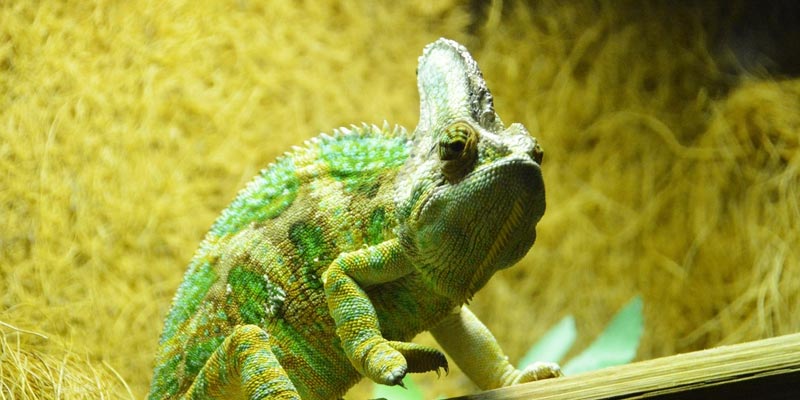Known for their unique characteristics and the ability to change color and distinct hunting methods, chameleons are indeed fascinating creatures. Yet understanding their temperature needs emerges as a crucial aspect of caring for them: this is where one must focus on their well-being.
This article delves into the temperature requirements of chameleons, investigates how these creatures regulate their body heat, and also probes whether they possess adaptation capabilities for cold weather conditions.
Table of Contents
Do Chameleons Require Heat?
Chameleons indeed require heat since they are ectothermic creatures, they depend on external sources of warmth, an essential element in regulating their body temperature.
The maintenance of an optimal degree is critical to their health and overall well-being. Many chameleon species inhabit the abundant warmth and sunlight of tropical and subtropical regions in their natural habitats.
Chameleons necessitate a specific temperature range, usually between 70°F to 85°F (21°C to 29°C), that is warm and stable; the exact degree hinges on their species.
Offering an appropriate temperature gradient within their enclosure proves crucial. It should comprise regions for basking under a heat source and cooler zones simultaneously allowing them to cool down.
The presence of warmth aids chameleons in several ways: it keeps them active; regulates their metabolic processes – crucial for survival and overall health – and enables them to conduct routine activities such as hunting prey.
Chameleons can experience stress, lethargy, and health problems if they do not receive the appropriate temperature conditions. Thus, it becomes imperative to guarantee their access to fitting heat sources like heat lamps or basking bulbs as an integral part of captive chameleon care.
How Much Heat Do Chameleons Need?
Most chameleon species thrive at an ideal temperature range: 70°F to 85°F (21°C to 29°C). Maintaining a consistent temperature within this optimal span is crucial for ensuring not only their health but also overall well-being.
Outside of this range, temperature fluctuations can precipitate stress, and lethargy — and potentially instigate health issues.
Do Chameleons Like It Warm?
Chameleons indeed favor higher temperatures; many species of these creatures inhabit tropical and subtropical regions in their natural habitats, which are areas rich with warmth and sunlight.
Such conditions enable them to thermoregulate effectively, which they bask under the sun’s rays for heat, then retreat into shady spots as necessary for cooling down.
The availability of warmth – a crucial factor in their sustained activity levels – not only facilitates relentless hunting for prey but also enables the execution of daily activities.
Is a Heat Rock Necessary For Chameleons?
In captivity, chameleons can thrive without the necessity of a heat rock. These rocks can pose risks for chameleons and other reptiles due to their potential temperature control inadequacy.
Arboreal by nature – they primarily inhabit trees and shrubs – chameleons demonstrate specific habitat preferences.
Thus, providing heat from above to mimic the natural sunlight they would receive in their native habitats is essential; and more suitable for creating the warm zones that chameleons require. You can opt for heat lamps and basking bulbs.
Can Chameleons Survive In Cold Weather?
Chameleons, not being naturally adapted to cold weather; their health can suffer from prolonged exposure to low temperatures. In response, wild chameleons decrease their activity and potentially hide – a strategy for conserving energy when temperature drops.
Thus, in captivity, we must ensure optimal conditions by maintaining appropriate temperatures, an action crucial for preserving these creatures’ well-being.
Chameleons experiencing prolonged exposure to cold conditions may develop lethargy, respiratory issues, and other health complications. Consider providing a warm and stable environment for your chameleon—this is particularly crucial if you reside in colder climates.
Conclusion
To ensure the health and happiness of chameleons, it is vital to comprehend and fulfill their temperature requirements. Thriving in warmer, tropical conditions; these fascinating reptiles necessitate a well-regulated temperature range within their enclosure.
Therefore—eschew heat rocks; instead—utilize suitable heat sources like lamps or basking bulbs that will facilitate an ideal gradient for optimal thermal comfort. Not adapted to cold weather, chameleons require protection from prolonged exposure to low temperatures for their well-being in captivity; thus, ensuring a healthy and vibrant life for your chameleon necessitates providing optimal temperature conditions.


